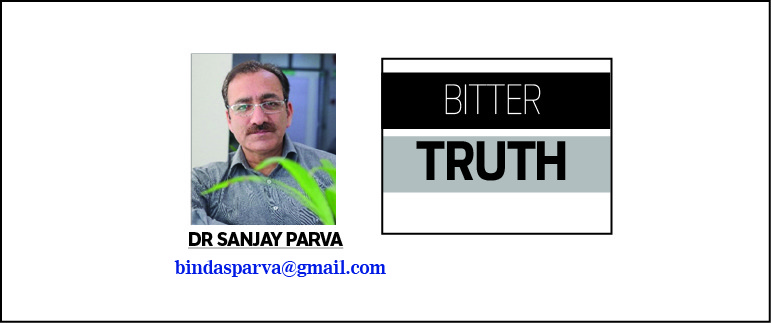The return of an elected assembly in Jammu and Kashmir after nearly half a decade of direct central rule has undoubtedly been celebrated as a democratic milestone. However, the days and weeks that have followed the election results reveal an uncomfortable reality: despite a clear mandate, political leadership – particularly that of the National Conference – has been more focused on narrative battles than governance agendas. This raises a legitimate, if inconvenient, question: was Jammu and Kashmir more effectively governed under the Lieutenant Governor (LG) and his technocratic team than it is likely to be under a resurgent but rhetorically preoccupied political class?
This debate is no longer abstract. It is unfolding in real time, as citizens weigh the visible outcomes delivered during LG-led governance against the increasingly vocal but seemingly directionless assertions of the elected leadership. To answer this question, we must dive into empirical evidence, administrative records, public sentiment, and institutional behavior, while remaining conscious of the larger constitutional and emotional stakes involved.
2019 to 2024: A Period of Administrative Stability
Since the abrogation of Article 370 in August 2019, Jammu and Kashmir was administered by a Union-appointed LG and two divisional commissioners overseeing the Jammu and Kashmir regions respectively. These two divisional commissioners handled the Union Territory in a way 90-member assembly is finding difficult to achieve. What appeared, at first, as a democratic vacuum gradually morphed into a model of technocratic governance, focused less on political negotiation and more on public service delivery, developmental execution, and security stabilization.
Under LG Manoj Sinha, a quiet but determined administrative recalibration unfolded. Officers were seen in offices, not in wazwans. Between 2020 and 2023, the UT recorded significant increases in infrastructural investments. The J&K Industrial Policy 2021 invited proposals worth over ₹70,000 crore, drawing interest from national and international investors. Road connectivity improved with long-stalled projects like the Jammu-Srinagar National Highway receiving accelerated attention. Health infrastructure saw expansion, particularly in district hospitals and primary health centers. Schemes like PMGSY, PMAY, and Jal Jeevan Mission were implemented with renewed efficiency.
Perhaps most importantly, the LG regime cultivated a perception of neutrality and predictability. It bypassed the entanglements of regional political rivalries and focused on bringing governance closer to the ground. Regular “Back to Village” programs, door-to-door grievance redressals, and digitization of land records under the ‘Aapki Zameen Aapki Nigrani’ project showed that governance could, at least in principle, proceed without elected intermediaries – especially when those intermediaries had long been accused of corruption, nepotism, or dynastic control.
There is, of course, a valid criticism that such administrative efficacy came at the cost of democratic legitimacy. But the more pressing question in the minds of many citizens today is: did it work?
The Return of the Politician: Noise Amid Nonsense
The 2024 assembly elections brought the National Conference back into the driver’s seat, at least numerically. Riding on emotional rhetoric or blackmail (hallmarks of NC’s modus operandi) and the emotional promise of political restoration, Omar Abdullah’s party emerged as the single largest group. Yet, weeks after the results, and no months, what dominates headlines is not a roadmap for development, employment, or governance, but rather ceaseless rhetoric criticizing LG’s powers and an end to what the NC terms as “undemocratic overreach.”
In an environment where people expected urgency and agenda-setting from their newly elected representatives, what they have received instead is a growing vacuum of ideas. There is little talk of administrative reform, economic planning, or social welfare expansion. NC is instead, and only, worried about who is transferred where, why and how. NC’s discourse has largely been reactive: questioning the legitimacy of the LG, demanding a return to pre-2019 status quo, and invoking the perceived injustices of the past.
It would be unfair to expect a fully formed government to materialize within days, especially given the sensitive post-370 context. Yet, the absence of even a provisional vision document, a people’s charter, or a legislative priorities list reflects poorly on a party that has governed, or misgoverned, the region for decades. The irony is stark: while political parties had for years accused the Centre of disenfranchising Kashmiris, when given a renewed mandate, their focus appears to be more on reclaiming symbolic power than on resolving real-world issues.
Public Sentiment: Hope Fading into Cynicism
Anecdotal evidence and early surveys suggest a divergence between political rhetoric and public expectation. In urban Srinagar, young professionals voice a growing disillusionment. “Under the LG, at least work was happening. Now it feels like we’re back to shouting matches,” said one university student, summing up a sentiment that is slowly gaining ground across age groups.
While rural voters, particularly in the Valley, may still align emotionally with the NC’s claims to historical legitimacy, their patience is not infinite. Farmers await irrigation support. Daily wage earners seek job security. Tourists are returning, but infrastructure gaps remain. In such a context, a governance vacuum risks becoming a reputational crisis – not for the LG, but for the newly empowered political class.
Social media narratives reveal a similar pattern. An analysis of Kashmiri social media handles over the past six weeks shows a marked decline in trust toward “political actors,” while interest in administrative success stories – be it school revamps, road completions, or e-governance – continues to remain steady. In a post-truth era, optics matter, and right now, the optics of governance still favor the LG camp.
The National Imperative and Delhi’s Quiet Confidence
It is no secret that the Union Government under Narendra Modi and Amit Shah has invested significant political capital in redefining Jammu and Kashmir’s governance model post-2019. The emphasis has been on dismantling legacy patronage networks and replacing them with service-oriented bureaucracies. In this context, the continuation of LG-led governance, or at least a hybrid model of shared power, is not just a tactical choice – it is a strategic conviction.
The central government has shown no haste in transitioning power to the elected assembly. The reasons are not opaque. An elected government perceived to be antagonistic to the Centre’s development and integration goals could risk undoing years of carefully crafted narrative management. Moreover, security remains a key concern, particularly in border districts and terror-prone zones.
The Way Forward: A Hybrid Governance Model?
The current moment in Jammu and Kashmir need not be framed as a zero-sum contest between the LG and the elected leadership. Rather, it presents a rare opportunity to reimagine a hybrid governance model – wherein administrative continuity is preserved while allowing elected representatives a structured role in policy formulation, regional planning, and legislative oversight.
Such a model would not dilute democratic norms but would modernize them to suit J&K’s specific context. After all, not all transitions must be immediate or absolute. In volatile regions across the world, governance evolves in phases. Perhaps Jammu and Kashmir is undergoing a similar, albeit slower, democratic recalibration.
For that to happen, however, the onus is squarely on the elected leadership. If the NC wants to replace the LG regime, it must outperform it – not in polemics, but in planning. It must show that its model of governance will be more inclusive, more effective, and more aligned with the aspirations of the people. It must propose a governance agenda that resonates beyond rhetoric – on schools, roads, health, jobs, and tourism. And it must do so with both humility and urgency.
The central government, for its part, can afford to wait. Its investment in J&K is not just political – it is ideological and strategic. So long as the elected leadership fails to offer a superior alternative, the Centre is unlikely to surrender the relative calm and efficiency that has been built over four years.
The post-election phase in Jammu and Kashmir is a critical juncture. It offers a chance to reflect not just on who should govern, but on how governance should evolve. The LG-led administration, despite its democratic limitations, delivered measurable progress. The newly elected government, on the other hand, has yet to offer a compelling reason for why it should be trusted with the reins of power again.
In the end, this is not a verdict on democracy. It is a question of efficacy. Until politics in Jammu and Kashmir returns to the business of people’s welfare, the administrative model led by the LG and divisional commissioners may continue to enjoy not just official sanction – but also public endorsement. People in Jammu and Kashmir, and especially Kashmir, are now holding to the last straw of fatigue. They can’t hold enough!




